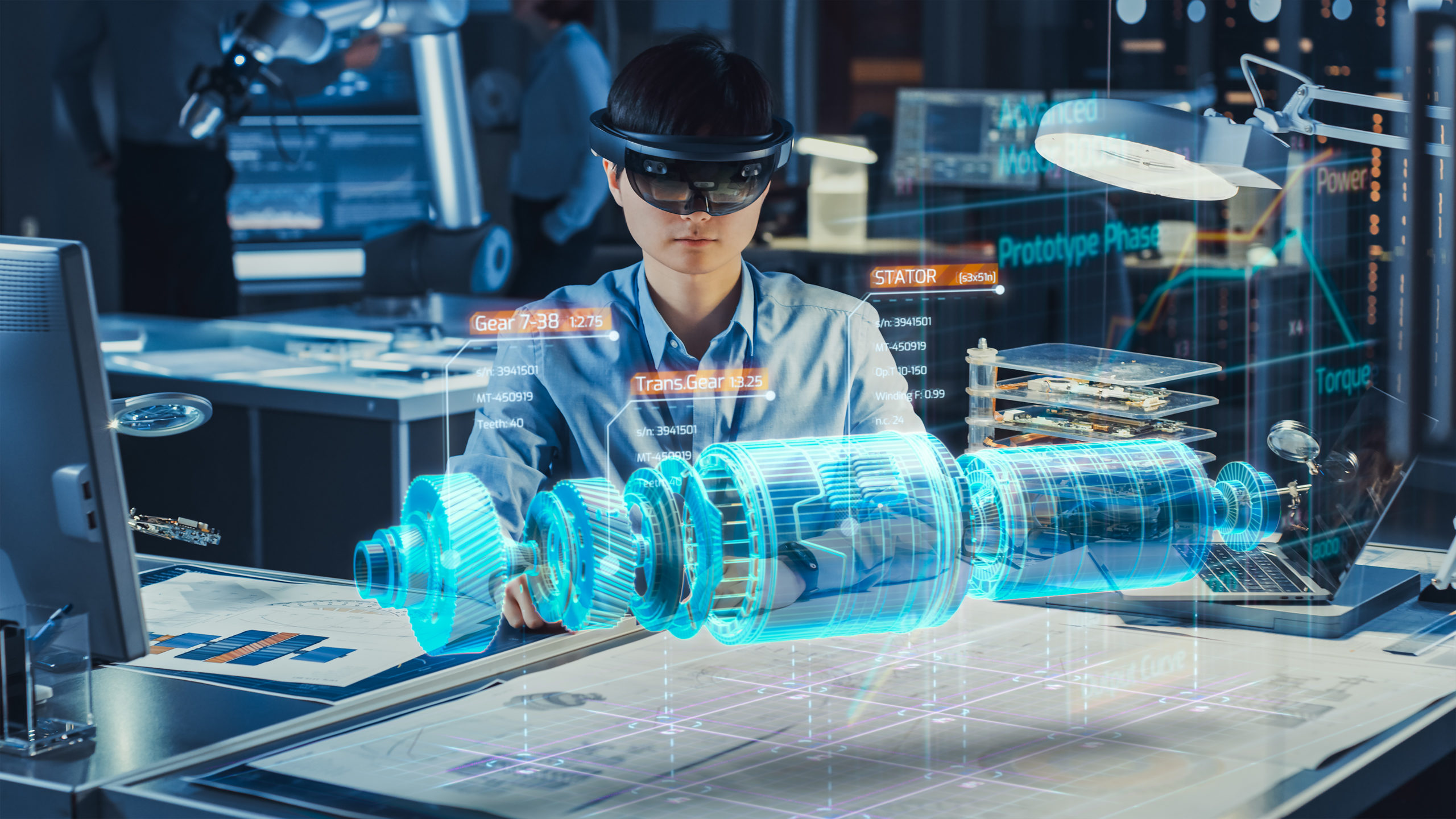The Future of Daily Tech: Augmented Reality
February 15, 2023
Augmented reality (AR) has been a buzzword in the tech industry for years, but it’s only now that it’s starting to live up to the hype. AR has the potential to transform the way we live, work, and play. In this article, we’ll explore what AR is, how it works, and the potential it has to change the world around us. We’ll also look at some of the latest developments in AR technology and how they could impact our daily lives in the future.
What is Augmented Reality?
AR is a technology that overlays digital information onto the real world. It differs from virtual reality (VR) in that it doesn’t create a completely immersive environment. Instead, it enhances the real world by adding digital information to it. This information can be anything from text and images to videos and 3D models.
AR works by using a combination of cameras, sensors, and software to detect the real world and overlay digital information onto it. The user can then see the real world and the digital information at the same time, creating a seamless blend of the two.
How does Augmented Reality work?
AR technology relies on a few key components to work. The first is a device with a camera, such as a smartphone or a tablet. The camera captures the real world, which is then analyzed by software to identify and track specific objects and features.
The software then overlays digital information onto the real world using a technique called rendering. This involves creating a 3D model of the digital information and then superimposing it onto the real-world environment.
AR also relies on sensors, such as gyroscopes and accelerometers, to track the movement of the device and adjust the position of the digital information accordingly. This allows the user to move around and interact with the AR experience in a natural way.
Potential Applications of Augmented Reality
AR has the potential to revolutionize many industries, from gaming and entertainment to healthcare and education. Here are just a few examples of the many applications of AR technology:
- Retail: AR can be used to enhance the shopping experience by allowing customers to try on clothes and see how they look without physically trying them on.
- Education: AR can be used to create immersive learning experiences that make it easier for students to understand complex concepts.
- Healthcare: AR can be used to train medical professionals and provide them with real-time information during surgeries and other procedures.
- Architecture and Design: AR can be used to create 3D models of buildings and other structures, allowing architects and designers to see how their designs will look in the real world.
- Tourism: AR can be used to provide visitors with interactive guides to historical sites and other tourist attractions.
Latest Developments in Augmented Reality
AR technology is constantly evolving, and there have been many exciting developments in recent years. Here are a few of the latest advancements in AR technology:
- Apple ARKit: Apple’s ARKit is a software development kit that allows developers to create AR experiences for iOS devices.
- Google ARCore: Google’s ARCore is a similar development kit for Android devices.
- Microsoft HoloLens: The HoloLens is a headset that uses AR technology to create immersive experiences for users.
- Magic Leap: Magic Leap is a company that has developed a headset that uses AR to create realistic, interactive experiences.
- Snapchat Filters: Snapchat’s popular filters use AR technology to add fun effects and animations to photos and videos.
FAQs
Q: Is augmented reality the same as virtual reality? A: No, they are different technologies. Virtual reality creates a completely immersive environment, while augmented reality overlays digital information onto the real world.
Q: What devices support augmented reality? A: Many smartphones and tablets now support augmented reality, including the latest iPhones and Android devices.
Q: What are some of the challenges with augmented reality? A: One of the biggest challenges is creating accurate and stable tracking of the real world. This requires sophisticated software and hardware that can detect and track objects in real-time. Another challenge is creating compelling and useful AR experiences that users will want to engage with.
Q: How is augmented reality different from mixed reality? A: Mixed reality is a hybrid of augmented and virtual reality that allows digital objects to interact with the real world. This means that digital objects can appear to interact with physical objects in real-time, creating a more immersive experience.
Q: What are some of the ethical concerns around augmented reality? A: One concern is the potential for AR to be used to invade people’s privacy, such as by overlaying personal information onto the real world. There is also a concern that AR could be used to create misleading or manipulative content, such as deep fakes or fake news.
Conclusion
Augmented reality has the potential to revolutionize the way we live, work, and play. It offers a new way to experience the world around us and has many practical applications in industries ranging from retail to healthcare. As AR technology continues to evolve, we can expect to see even more exciting developments and new use cases emerge. With the increasing prevalence of AR-enabled devices, it’s clear that this technology is here to stay. The future of daily tech is undoubtedly augmented reality, and we can’t wait to see what the future holds.
See Also
- The Future of Daily Tech: Nanotechnology
- A Captivating Glimpse into the Future Where AI LLAMs Shape Our Lives
- The Future of Daily Tech: How NFTs will Impact Your Future
- The Future of Daily Tech: Everything is Wireless
- Interesting Technologies 2022: Part 1

